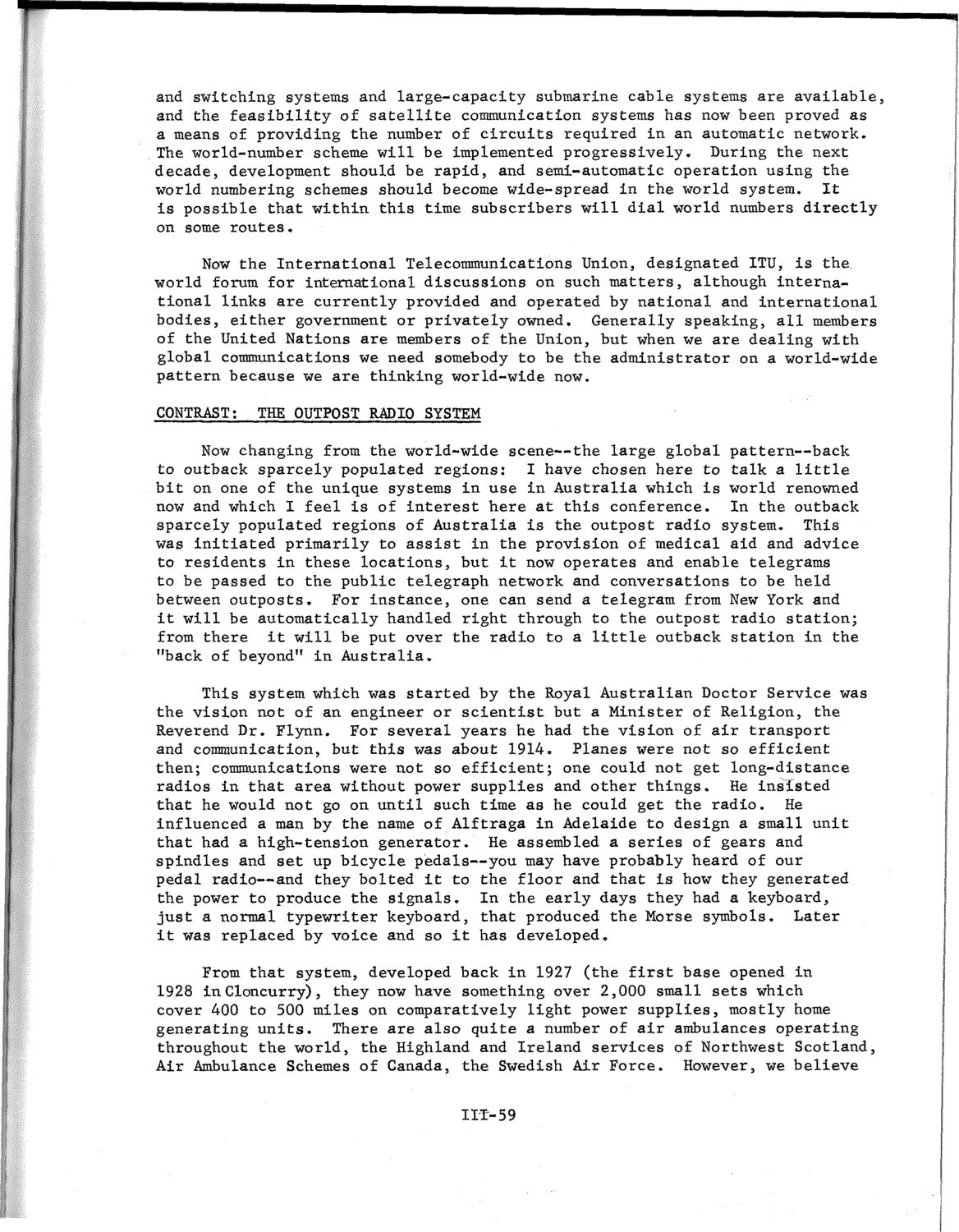| |
| |
Caption: SWE - Proceedings of the First International Conference of Women Engineers and Scientists
This is a reduced-resolution page image for fast online browsing.

EXTRACTED TEXT FROM PAGE:
and switching systems and large-capacity submarine cable systems are available, and the feasibility of satellite communication systems has now been proved as a means of providing the number of circuits required in an automatic network. The world-number scheme will be implemented progressively. During the next decade, development should be rapid, and semi-automatic operation using the world numbering schemes should become wide-spread in the world system. It is possible that within this time subscribers will dial world numbers directly on some routes. Now the International Telecommunications Union, designated ITU, is the. world forum for international discussions on such matters, although international links are currently provided and operated by national and international bodies, either government or privately owned. Generally speaking, all members of the United Nations are members of the Union, but when we are dealing with global communications we need somebody to be the administrator on a world-wide pattern because we are thinking world-wide now. CONTRAST: THE OUTPOST RADIO SYSTEM Now changing from the world-wide scene—the large global pattern—back to outback sparcely populated regions: I have chosen here to talk a little bit on one of the unique systems in use in Australia which Is world renowned now and which I feel is of interest here at this conference. In the outback sparcely populated regions of Australia is the outpost radio system. This was initiated primarily to assist in the provision of medical aid and advice to residents in these locations, but it now operates and enable telegrams to be passed to the public telegraph network and conversations to be held between outposts. For instance, one can send a telegram from New York and it will be automatically handled right through to the outpost radio station; from there it will be put over the radio to a little outback station in the "back of beyond" in Australia. This system which was started by the Royal Australian Doctor Service was the vision not of an engineer or scientist but a Minister of Religion, the Reverend Dr. Flynn. For several years he had the vision of air transport and communication, but this was about 1914. Planes were not so efficient then; communications were not so efficient; one could not get long-distance radios in that area without power supplies and other things. He insisted that he would not go on until such time as he could get the radio. He influenced a man by the name of Alftraga in Adelaide to design a small unit that had a high-tension generator. He assembled a series of gears and spindles and set up bicycle pedals—you may have probably heard of our pedal radio—and they bolted it to the floor and that is how they generated the power to produce the signals. In the early days they had a keyboard, just a normal typewriter keyboard, that produced the Morse symbols. Later it was replaced by voice and so it has developed. From that system, developed back in 1927 (the first base opened in 1928 in Cloncurry), they now have something over 2,000 small sets which cover 400 to 500 miles on comparatively light power supplies, mostly home generating units. There are also quite a number of air ambulances operating throughout the world, the Highland and Ireland services of Northwest Scotland, Air Ambulance Schemes of Canada, the Swedish Air Force. However, we believe IIT-59
| |